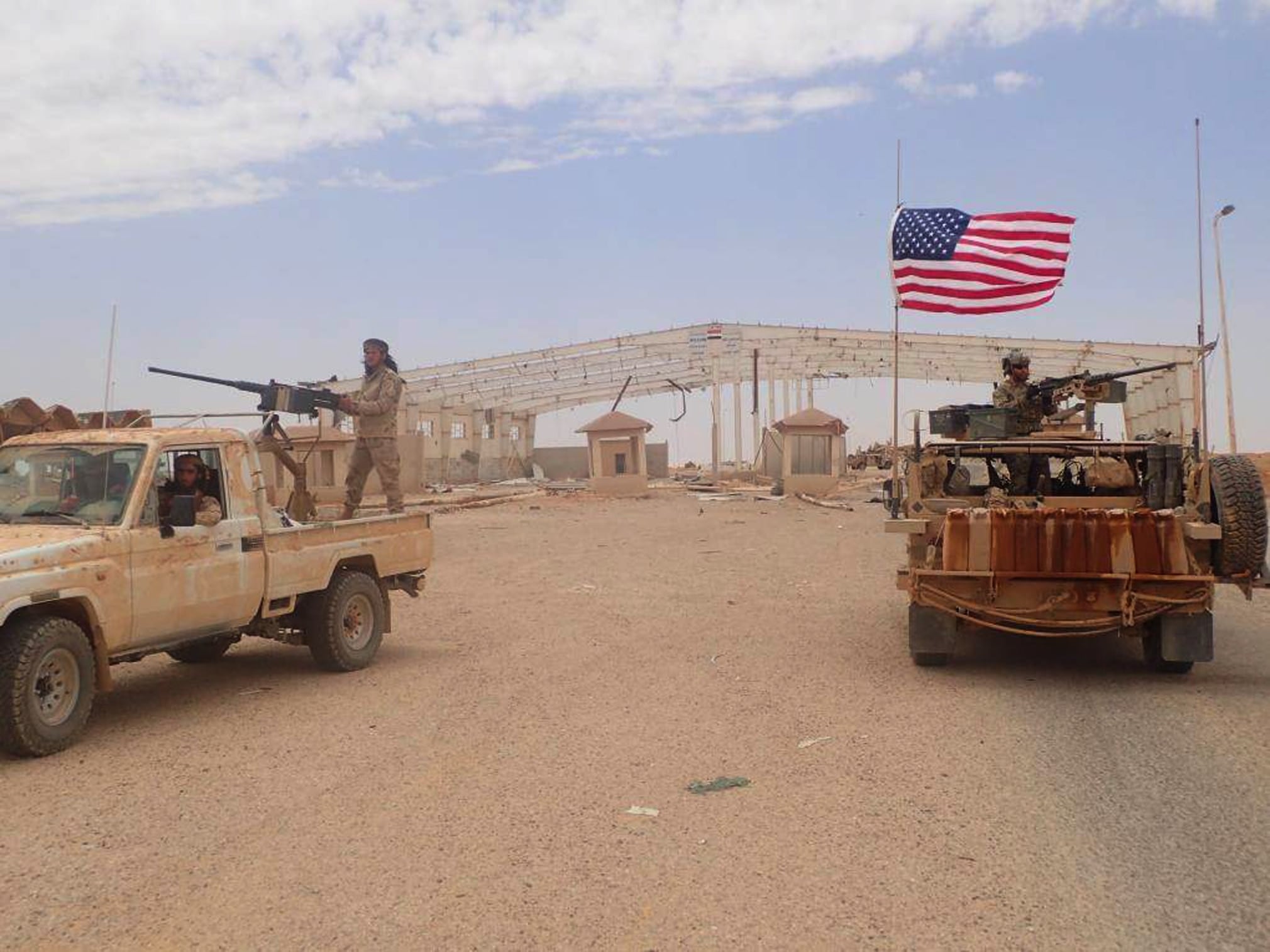WASHINGTON — Over the past several days, the U.S. military has been increasing its combat power at a remote training facility near the Tanf border crossing in Syria in preparation for any aggression by pro-regime and Iranian-backed militias, which have been massing forces in the area, according to Col. Ryan Dillon, a spokesperson for Operation Inherent Resolve.
The development comes as militias aligned to Syrian President Bashar al-Assad and groups backed by Iran have steadily massed forces just outside the 55 kilometer-radius deconfliction zone around the Tanf region since the beginning of May. Those forces have tanks, artillery and modified pickup trucks with mounted heavy weapons, Dillon said.
The training facility at Tanf rests near a strategic border crossing between Syria and Iraq and houses a couple hundred coalition and partner forces. Force protection at the remote base has been a primary concern, according to officials at U.S. Central Command. The U.S. military has "ensured our forces are prepared and ready to defend themselves," Dillon said. U.S. air-power has "constant coverage over our forces at Al Tanf," to respond to hostile actors and to watch threats to U.S. and partner forces at the facility.
On May 18, coalition jets launched a strike against a pro-regime convoy that had trespassed into the deconfliction zone after that convoy refused to react to a show-of-force flyover and warning shots. The airstrike destroyed an armored vehicle and bulldozer. Those forces halted their forward progress but are still deep within the zone, and are considered a threat, Dillon said.
Forces outside the deconfliction zone are continuing to mass and are actively patrolling the area, he said.
Officials in Baghdad are still trying to convince the pro-regime militias that they need to vacate the area. Over the weekend, U.S. forces dropped leaflets warning the militias to leave the zone.
The U.S. is also using the telephone hotline established with the Russians to avoid mid-air mishaps. We are "offering [the militias] a way to vacate the area through the deconfliction line with the Russians," Dillon said.
The militias responded, via the Russians, that they are in the area to fight ISIS, he said. However, analysts suspect the militias’ primary goal is to establish a land corridor to link Iran with Damascus and its Shia proxy Hezbollah in Lebanon. "it is a key part of a network of connections for Iran," said Luke Coffey, director of the Douglas and Sarah Allison Center for Foreign Policy at The Heritage Foundation in Washington, D.C.
U.S. and coalition forces operating at the Tanf training facility use the location to train two partner forces, the Maghawir al-Thawra and Shohada al-Quartayn. CENTCOM contends these groups are anti-ISIS fighters, but in the past they have fought against the Assad regime.
There has not been another incident between U.S. and pro-regime forces near Tanf since May 18, despite the increasing level of tension. It is "difficult to say why there have not been any kinetic actions again," Coffey told Military Times. "It could be the next step," but commanders on the ground have the tactical situational awareness to make such a call, he said.
"No doubt the local commander will have the proper rules of engagement to defend the base," Coffey said. The Trump administration has provided more leeway to ground commanders to make tactical and strategic decisions, which will greatly aid the situation, a stark change in policy from the previous administration, Coffey said. "When the time is right, ground commanders will act."
Shawn Snow is the senior reporter for Marine Corps Times and a Marine Corps veteran.




